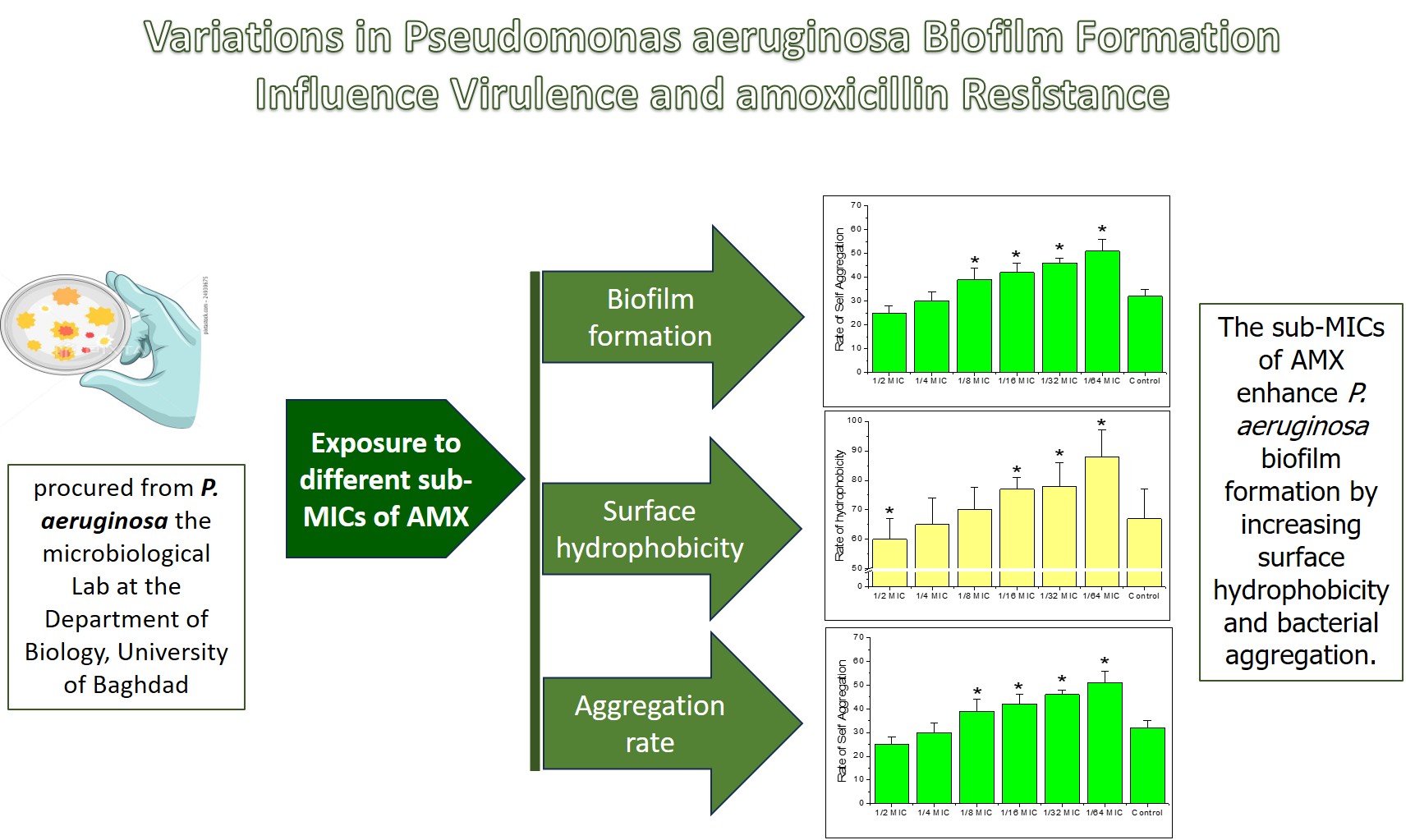Variations in Pseudomonas aeruginosa Biofilm Formation Influence Virulence and amoxicillin Resistance
DOI:
https://doi.org/10.65329/wjeb.v13.01.005Keywords:
Aggregation, Amoxicillin, Biofilm, Hydrophobicity, Pseudomonas aeruginosa.Abstract
Inhibition of adherence pathogenic bacteria, such as Pseudomonas aeruginosa, to the surfaces is one important approach that is employed by antibiotics against bacterial infectious diseases. The present study is aimed at determining the involvement of sub-inhibition concentrations of amoxicillin (AMX) in the modulation of P. aeruginosa capacity to produce the biofilm. The approach was to expose the P. aeruginosa to various sub-minimum inhibitory concentrations (MICs) of amoxicillin (AMX) and thereafter test the resultant biofilm formation by the bacteria under these exposure conditions. The research also determined the effect that sub-MICs of AMX have on surface hydrophobicity and bacterial aggregation. The findings were that sub-MICs of AMX influenced varying forms of biofilm formation. High sub-MIC of AMX (½ MIC) lowered the formation of the biofilm, while low sub-MICs enhanced the capacity for the bacteria to develop polystyrene microtiter plate biofilms. The influence that sub-MICs of AMX have on surface hydrophobicity and bacterial aggregation detection were similar to what they showed on the production of the biofilm. Low level sub-MICs concentrations of AMX (1/16, 1/32, and 1/64) enhanced surface hydrophobicity, while on the other hand ½ MIC AMX lowered the surface hydrophobicity of the bacteria. Sub-MICs of AMX (1/8, 1/16, 1/32, and 1/64) also enhanced the rate of bacterial aggregation for P. aeruginosa. The study concludes that sub-MICs of AMX improve the capacity for P. aeruginosa to produce biofilms by enhancing surface hydrophobicity and bacterial aggregation.

Downloads
Published
Issue
Section
License
Copyright (c) 2025 Farah Mohommed Saleh, Huda Abbas Mohammed (Author)

This work is licensed under a Creative Commons Attribution-NonCommercial-NoDerivatives 4.0 International License.
All articles in the World Journal of Experimental Biosciences are published under the terms of the Creative Commons Attribution 4.0 International License (CC BY 4.0), which permits unrestricted use, distribution, and reproduction in any medium, provided the original work is properly cited.





